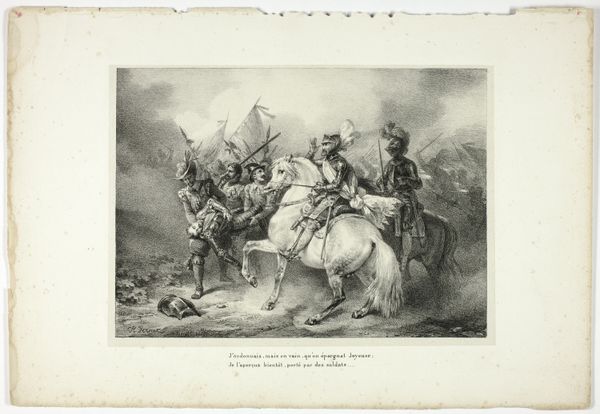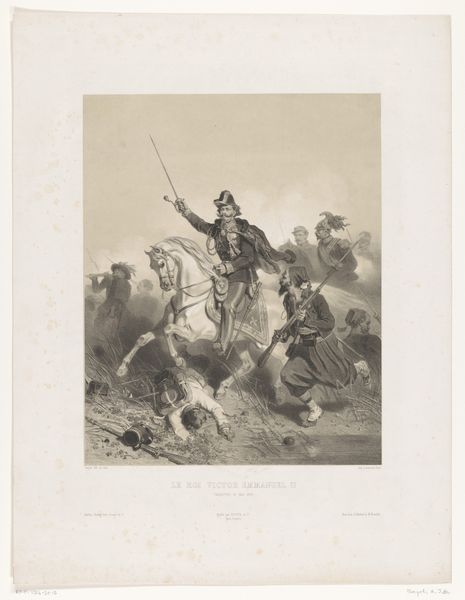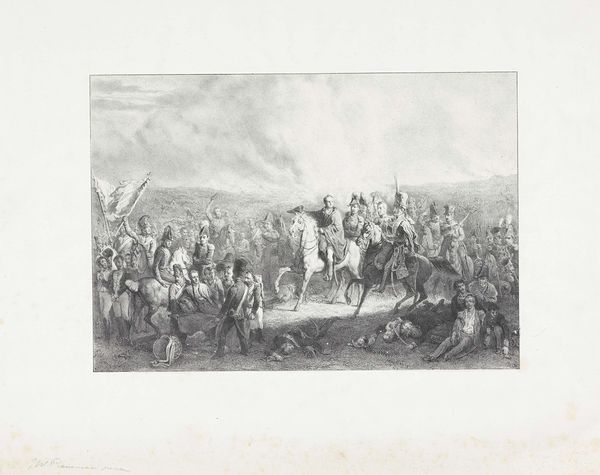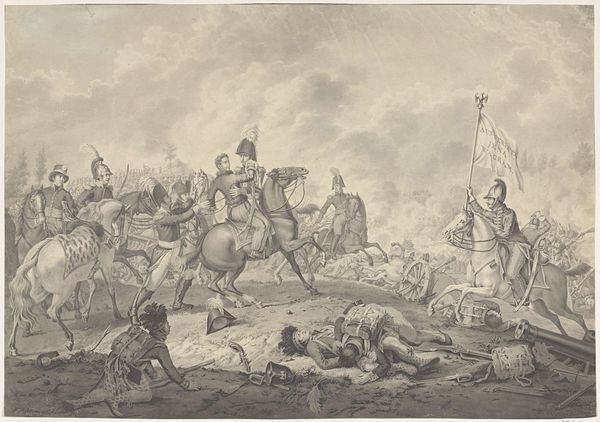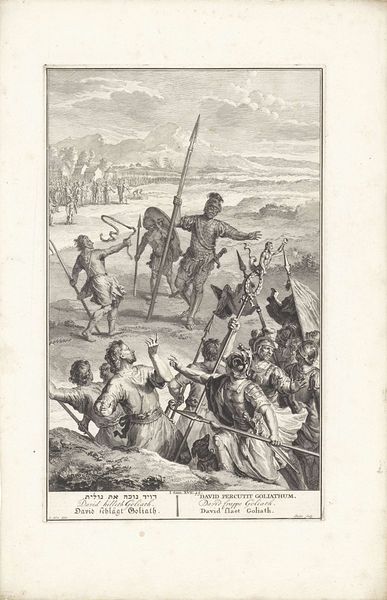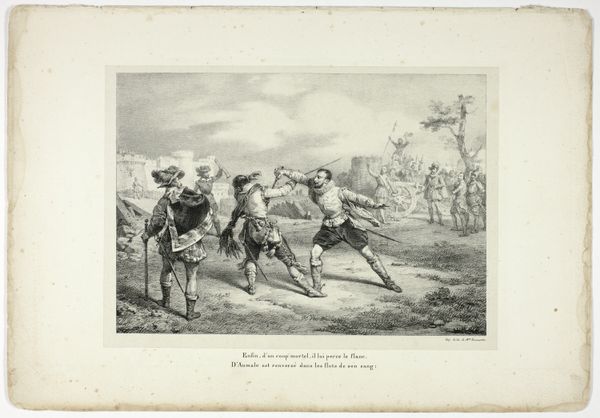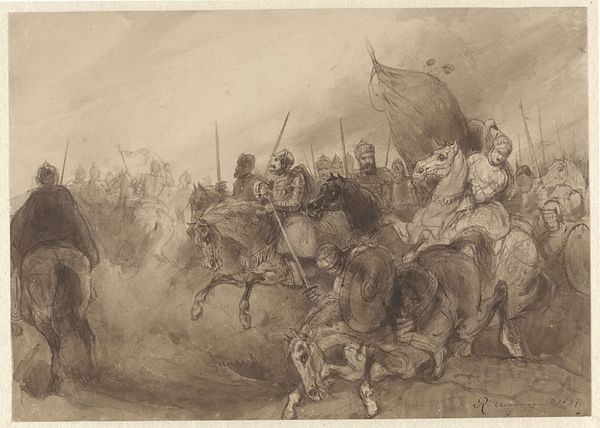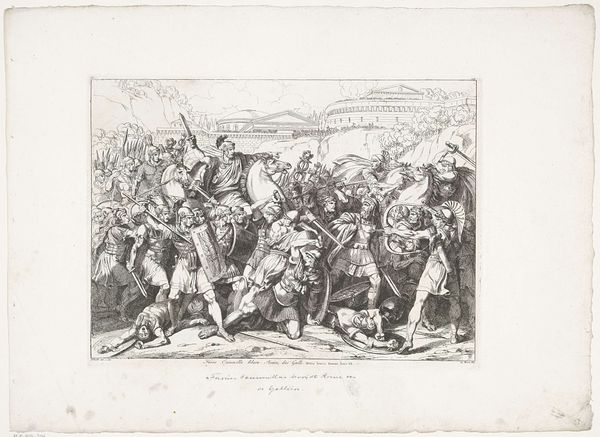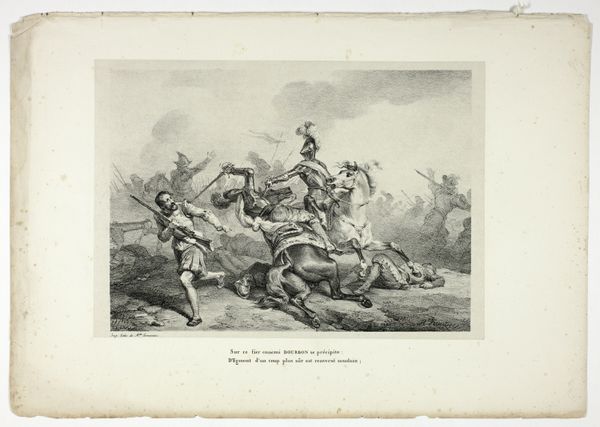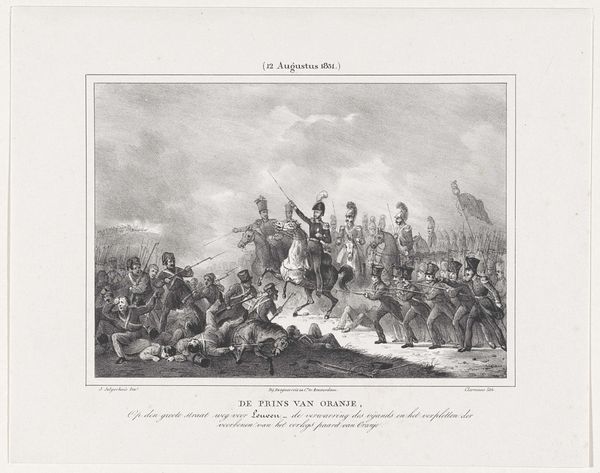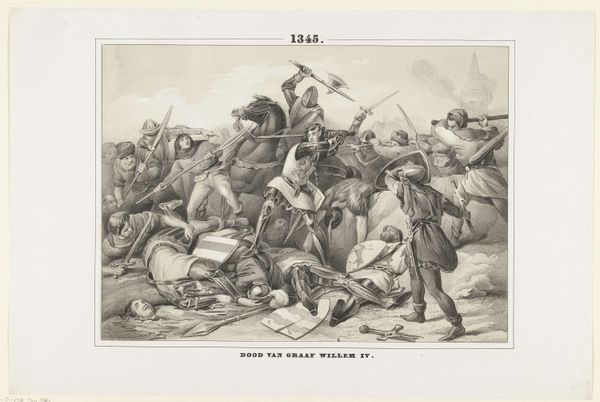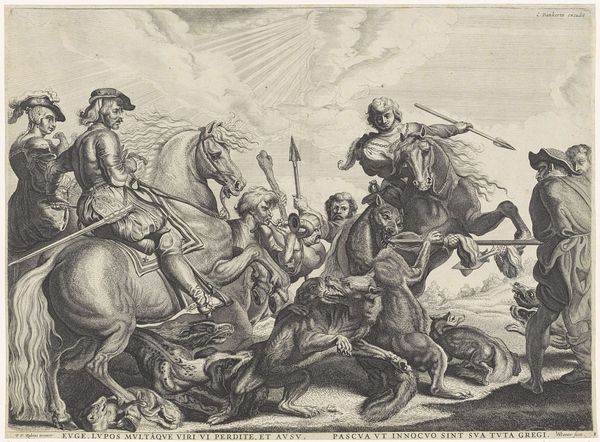
drawing, lithograph, print, paper
#
drawing
#
narrative-art
#
lithograph
# print
#
paper
#
romanticism
#
history-painting
Dimensions: 188 × 263 mm (image); 196 × 271 mm (primary support); 290 × 420 mm (secondary support)
Copyright: Public Domain
Curator: Horace Vernet’s 1825 lithograph, “ce panache éclatant qui flotte sur ma tête…” currently resides here at the Art Institute of Chicago. Vernet was known for these narrative prints of military scenes, a kind of artistic industrial complex in its time, mass producing heroic tales. Editor: It's arresting, immediately evocative of Romantic-era grand narratives. The high contrast, dramatic use of shadow, and dynamic composition pull you right into the heart of the charge, wouldn’t you say? Curator: Indeed. Consider the process; lithography allowed for relative ease in reproduction, circulating idealized, romanticized versions of military life across various social strata. We should really think about who was consuming this and what they were taking away. Editor: Absolutely. I’m drawn to the almost theatrical lighting. Notice how it accentuates the central figures—their armour gleaming—while figures around them are blurred. It certainly amplifies that feeling of immediacy, doesn’t it? Curator: And let's not ignore the labor involved, right? Not just Vernet's but the workshops where these were replicated. These images had a political job. What version of history were they pushing? Editor: But think about the construction of heroism here, too! The central figure, clearly in command, highlighted by the light and lifted higher on his striking, white horse, embodies classical ideals. How Vernet's work connects to tradition seems more compelling to me than the social history it might represent. Curator: But we can't separate that construction of heroism from the military and political landscape of the 19th century, can we? Vernet made images that reinforced existing hierarchies and power structures, no doubt profiting from the demand, contributing to an ongoing mythology. Editor: Still, the success hinges on skillful deployment of form. The dramatic foreshortening of figures, the swirling dust that leads our eyes across the composition – regardless of intention, the aesthetic choices contribute significantly to its enduring appeal, its status as “art.” Curator: An appeal inextricably tied to the social and material conditions of its creation. It serves as propaganda and historical record, reminding us to carefully examine what these images sold, to whom, and at what cost. Editor: Ultimately, an intriguing visual and political statement—one crafted through clever use of visual components.
Comments
No comments
Be the first to comment and join the conversation on the ultimate creative platform.
